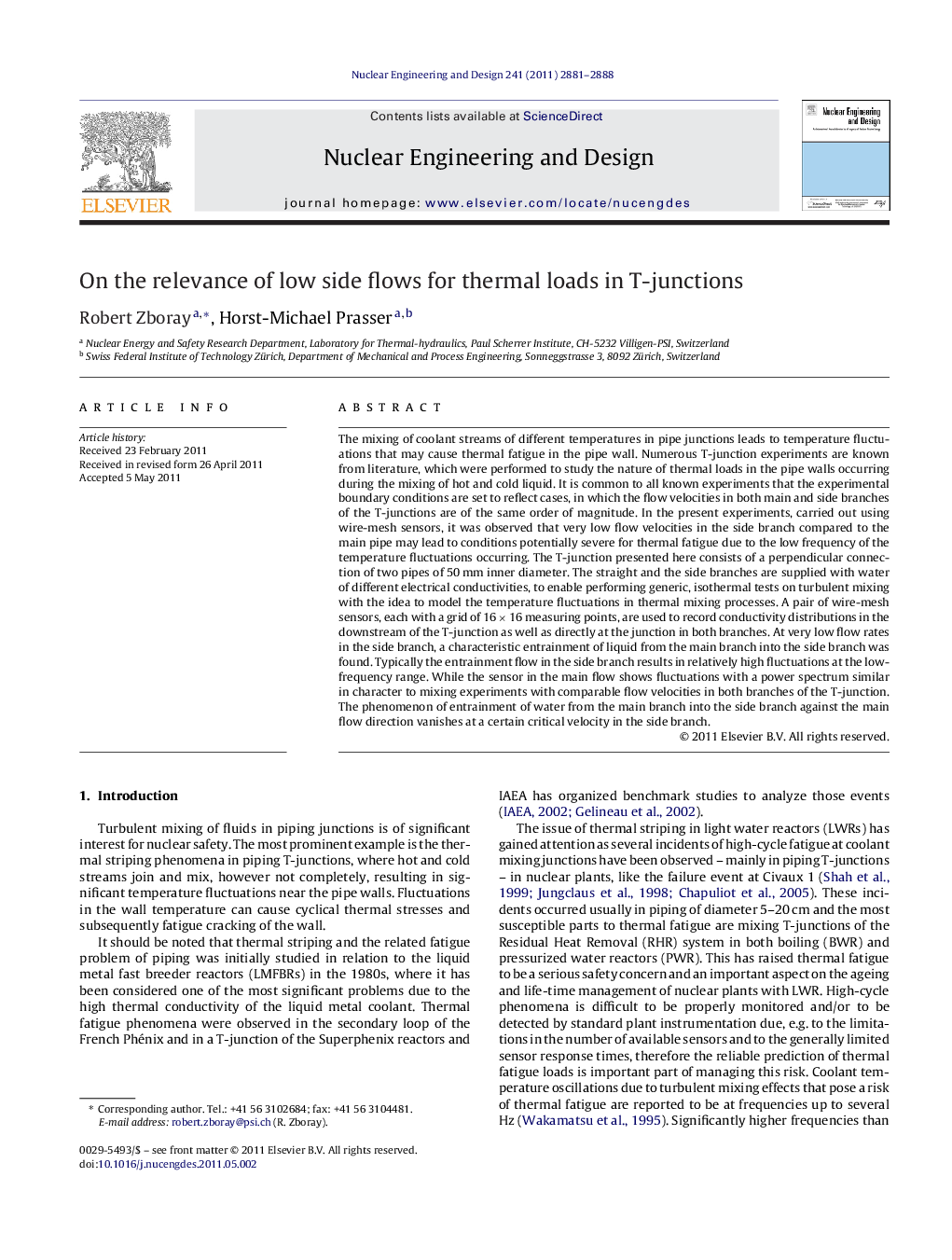| کد مقاله | کد نشریه | سال انتشار | مقاله انگلیسی | نسخه تمام متن |
|---|---|---|---|---|
| 297406 | 511756 | 2011 | 8 صفحه PDF | دانلود رایگان |

The mixing of coolant streams of different temperatures in pipe junctions leads to temperature fluctuations that may cause thermal fatigue in the pipe wall. Numerous T-junction experiments are known from literature, which were performed to study the nature of thermal loads in the pipe walls occurring during the mixing of hot and cold liquid. It is common to all known experiments that the experimental boundary conditions are set to reflect cases, in which the flow velocities in both main and side branches of the T-junctions are of the same order of magnitude. In the present experiments, carried out using wire-mesh sensors, it was observed that very low flow velocities in the side branch compared to the main pipe may lead to conditions potentially severe for thermal fatigue due to the low frequency of the temperature fluctuations occurring. The T-junction presented here consists of a perpendicular connection of two pipes of 50 mm inner diameter. The straight and the side branches are supplied with water of different electrical conductivities, to enable performing generic, isothermal tests on turbulent mixing with the idea to model the temperature fluctuations in thermal mixing processes. A pair of wire-mesh sensors, each with a grid of 16 × 16 measuring points, are used to record conductivity distributions in the downstream of the T-junction as well as directly at the junction in both branches. At very low flow rates in the side branch, a characteristic entrainment of liquid from the main branch into the side branch was found. Typically the entrainment flow in the side branch results in relatively high fluctuations at the low-frequency range. While the sensor in the main flow shows fluctuations with a power spectrum similar in character to mixing experiments with comparable flow velocities in both branches of the T-junction. The phenomenon of entrainment of water from the main branch into the side branch against the main flow direction vanishes at a certain critical velocity in the side branch.
► Turbulent mixing of fluid in a T-junction is investigated being relevant for thermal fatigue.
► Special case of extremely low side flows (leakage flows) are studied.
► High spatial and time resolution results are obtained using wire mesh sensors.
► Entrainment into side branch occurs at very low side flows, which disappears above a critical side flow rate.
► Entrainment causes significant low-frequency oscillations in the side branch potentially dangerous to induce thermal fatigue.
Journal: Nuclear Engineering and Design - Volume 241, Issue 8, August 2011, Pages 2881–2888